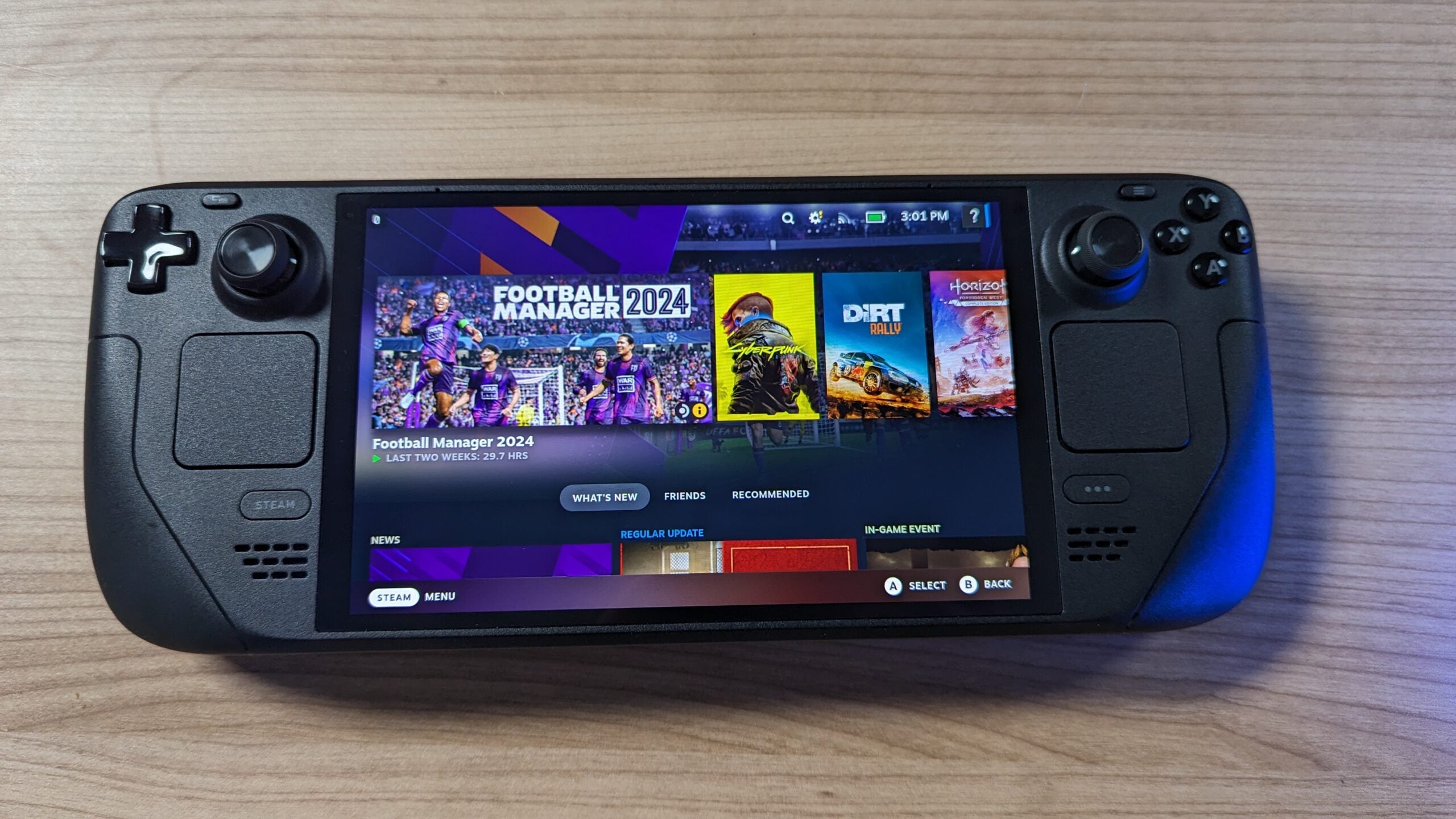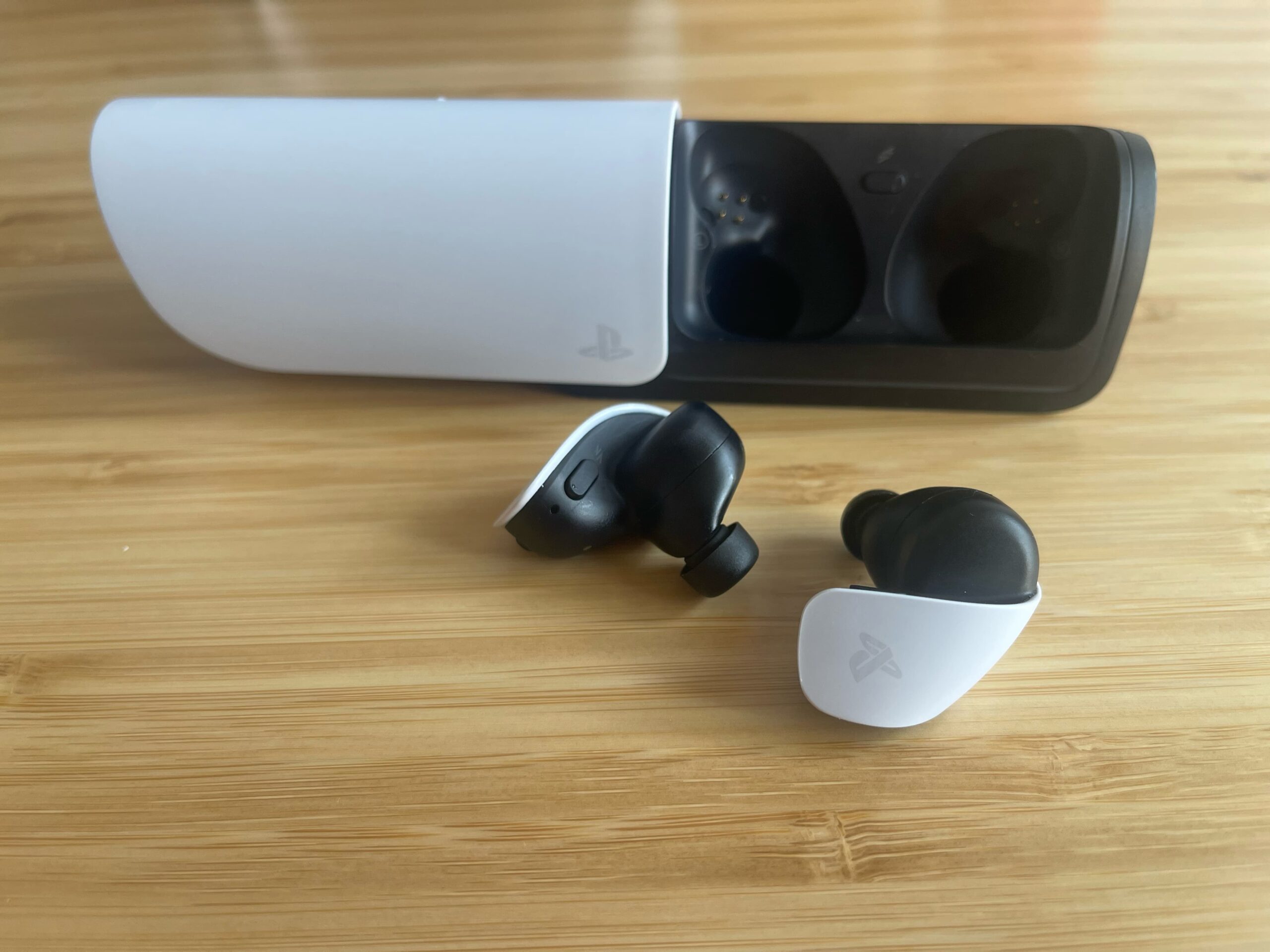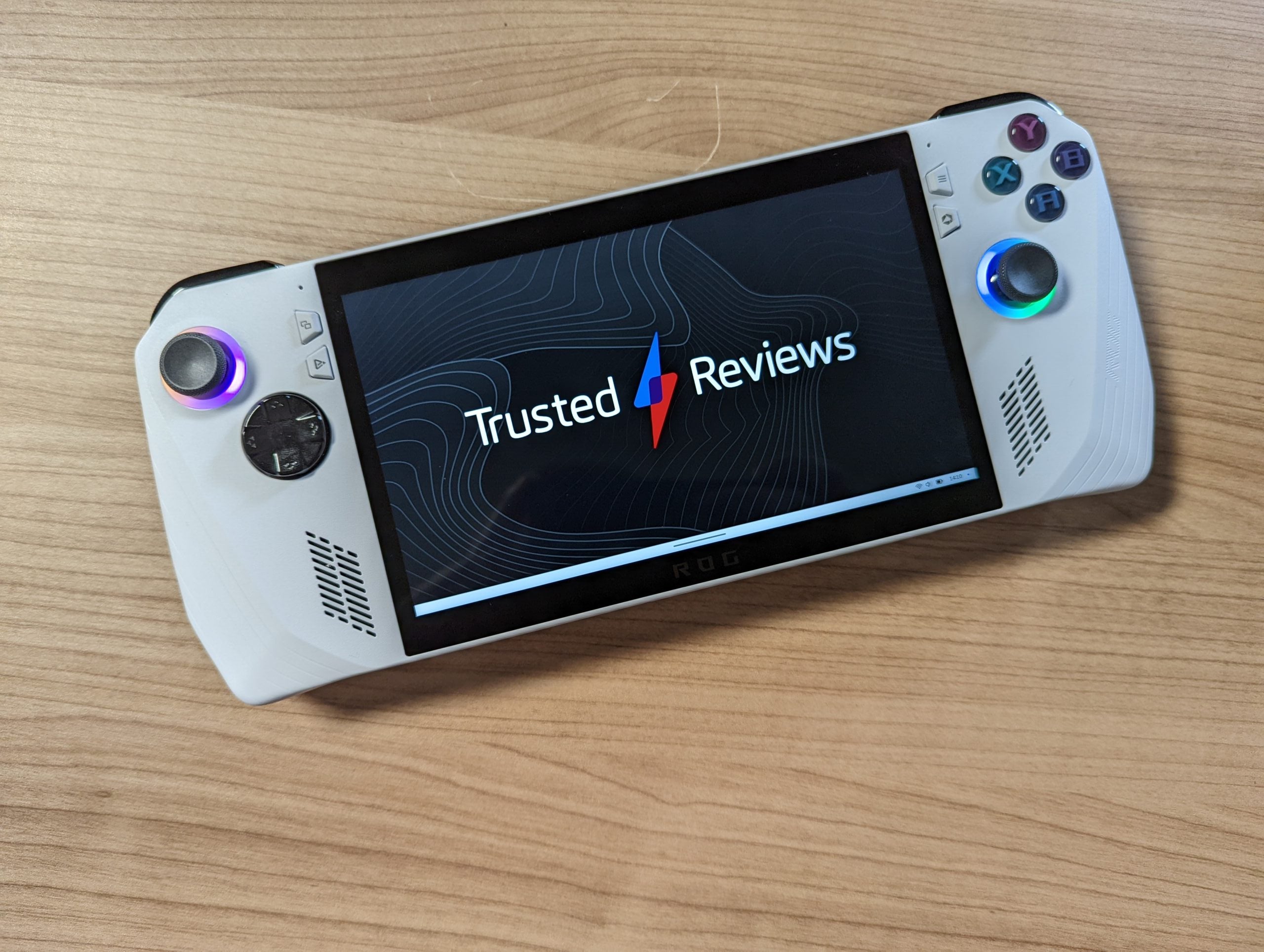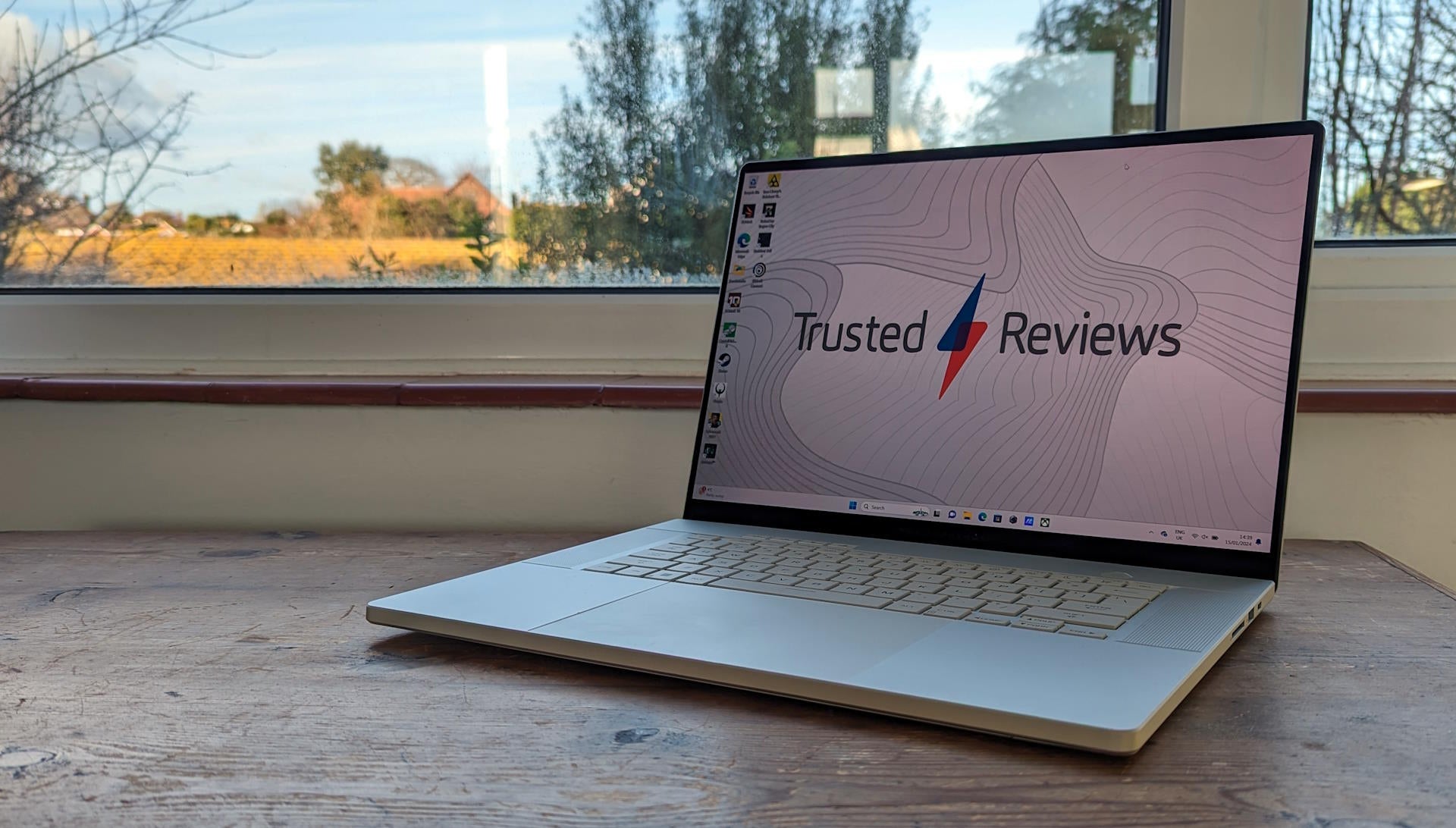Pico 4 Review
A VR headset that can challenge the Meta Quest
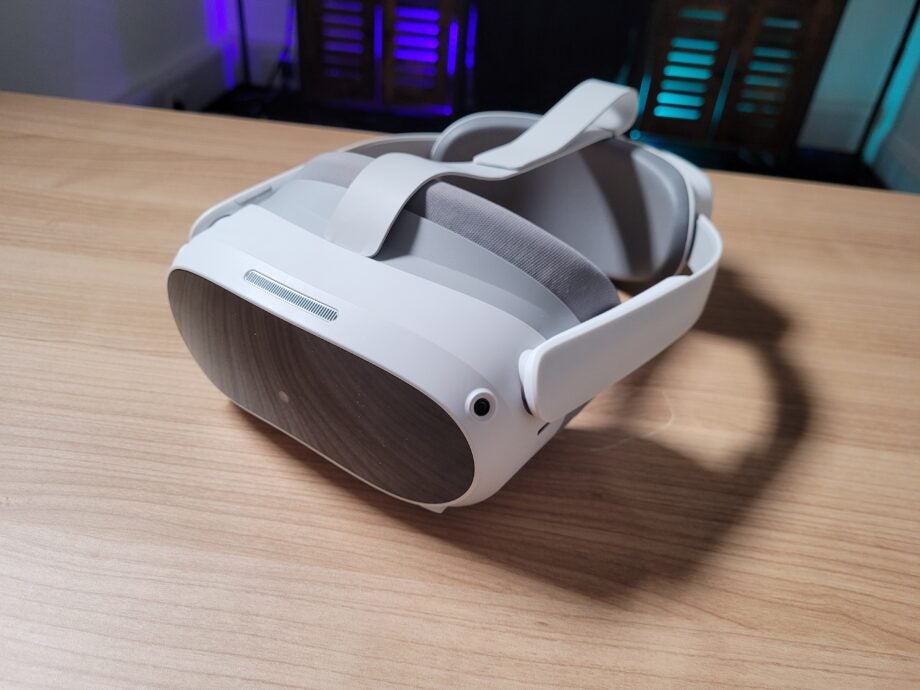

Verdict
The Pico 4 is a great all-in-one VR headset, with a lightweight design, high screen resolution and reliable performance. But its limited game library means most people will find better long-term value with the Meta Quest 2 instead.
Pros
- Wireless freedom for VR gaming
- Compact and lightwieght design
- High-resolution display
- Great performance
Cons
- Limited game library
- Lack of headphone jack
Availability
- UKRRP: £379.99
- EuropeRRP: €429
Key Features
- All-in-one design:The Pico 4 can run indepedently, and doesn’t require an external PC or console to function.
- 4K screen resolution:With a 4320×2160 total resolution, the Pico 4 offers 4K clarity for sharper images.
- Colour passthrough:The Pico 4 features colour passthrough, which enables you to see your surroundings in detail without taking the headset off. This is useful for locating the bundled controllers quickly.
Introduction
The Pico 4 is the first true competitor to the Meta Quest range, with the new all-in-one VR headset offering the same level of wireless freedom.
Not only is the Pico 4 one of the very few VR headsets capable of matching the Meta Quest for convenience, but it’s offering better specs at a more affordable price too.
While Pico seemingly has everything on paper required to topple Meta in its quest for VR dominance, there is one slight issue holding back the new headset – its game catalogue.
Here are my thoughts on whether the Pico 4 has what it takes to make our Best VR Headset list.
Design
- Compact and lightweight design
- Dial allows you to adjust the fit
- Lacks a headphone jack
Viewed from the front, the Pico 4 looks like a pair of ski goggles. It’s quite remarkable that Pico has been able to create such a compact device capable of running VR software all by itself, no PC required.
At just 163mm wide, it’s significantly thinner than the Meta Quest 2. There’s also a smaller plastic casing at the front, reducing the pressure it applies to your neck after long bouts of gaming.
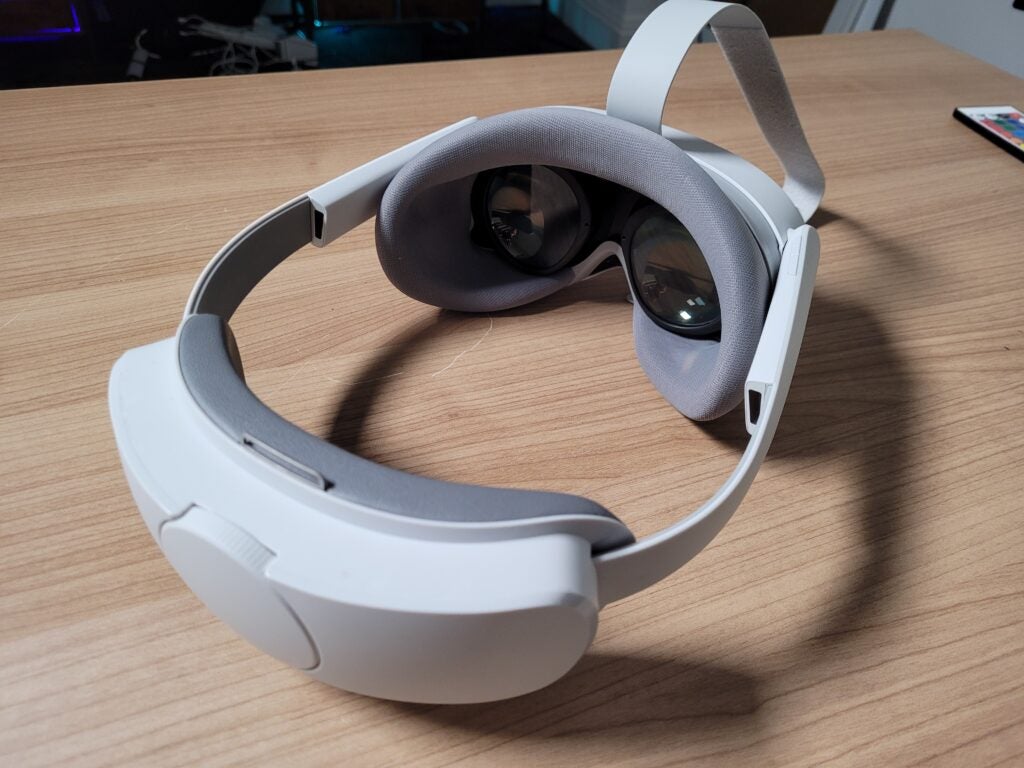
This has been made possible thanks to the internal pancake lens. Compared to more traditional alternatives, the pancake lens takes up less space, therefore allowing manufacturers to shrink the size of the headset.
This helps to drastically reduce the weight, with the Pico 4 hitting the scales at just 295 grams. That’s almost half the heft of the Meta Quest 2, which weighs 503 grams.
It’s incredibly easy to slip this VR headset on. Simply adjust the dial at the back, and you’ll be able to loosen and tighten the headset so it sits snug around your skull. There is one velcro strap, but I rarely needed to adjust it. It’s a refreshing change from other VR headsets where it can take a few minutes of tweaking to ensure you’ve got a comfortable fit.
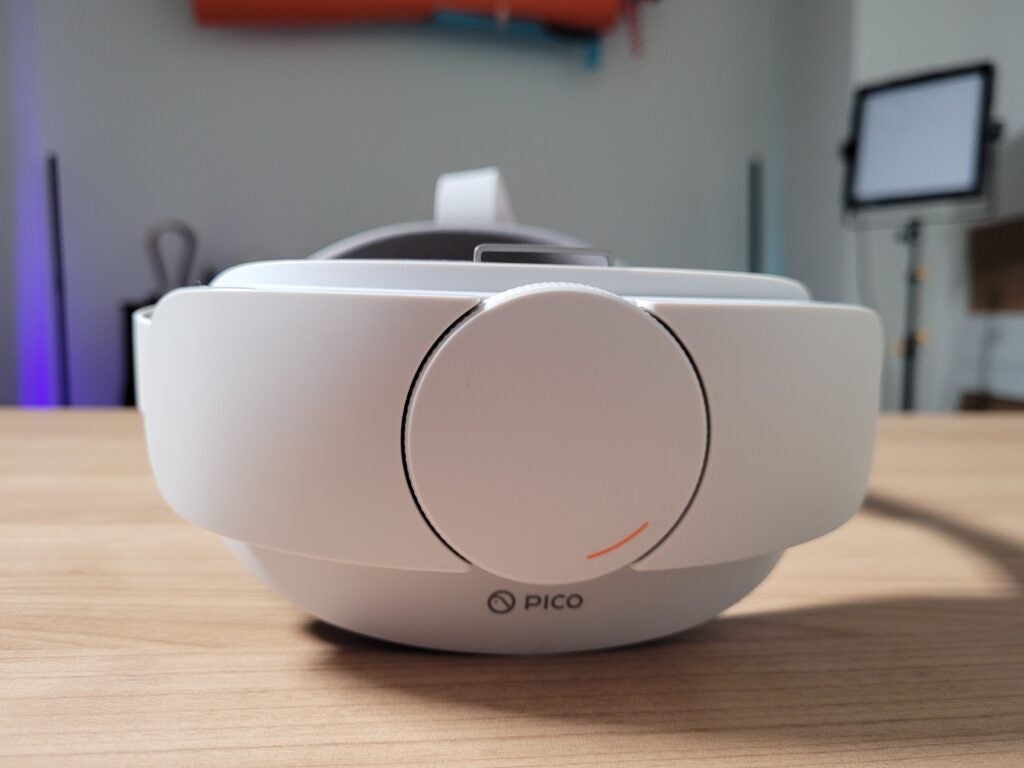
You’ll see cameras dotted around the front of the Pico 4 headset. These aren’t for taking social media friendly snaps, but to track your movement and enable a colour passthrough sight so you can see your surroundings clearly whenever required. I found this especially useful when trying to locate the controllers after donning the headset.
There’s only one port on Pico 4, and that’s USB-C for charging up the battery. I’m surprised by the omission of a headphone jack, although it does have Bluetooth support and integrated speakers. Those speakers can be hiked up to a high decibel, although they’re not quite detailed enough for me to happily forgo headphones.
Controllers
- Similar design to the Meta Quest controllers
- Allows you to mimic real-life hand movements
- Requires AA batteries to function
The Pico 4 controllers look and feel virtually identical to those for the Meta Quest 2 – in fact, I’ve repeatedly picked up Meta’s pads by accident when using the Pico, and taken a few minutes to recognise my mistake.
They have the same input layout, with a few front-facing buttons, a couple of analogue sticks and two rear triggers. It’s a clever setup, allowing you to mimic the hand movements of picking up an object, pulling the string of a bow or even firing a gun. This boosts the immersion of in-game activities substantially, while the tracking always proved to be impressively accurate.
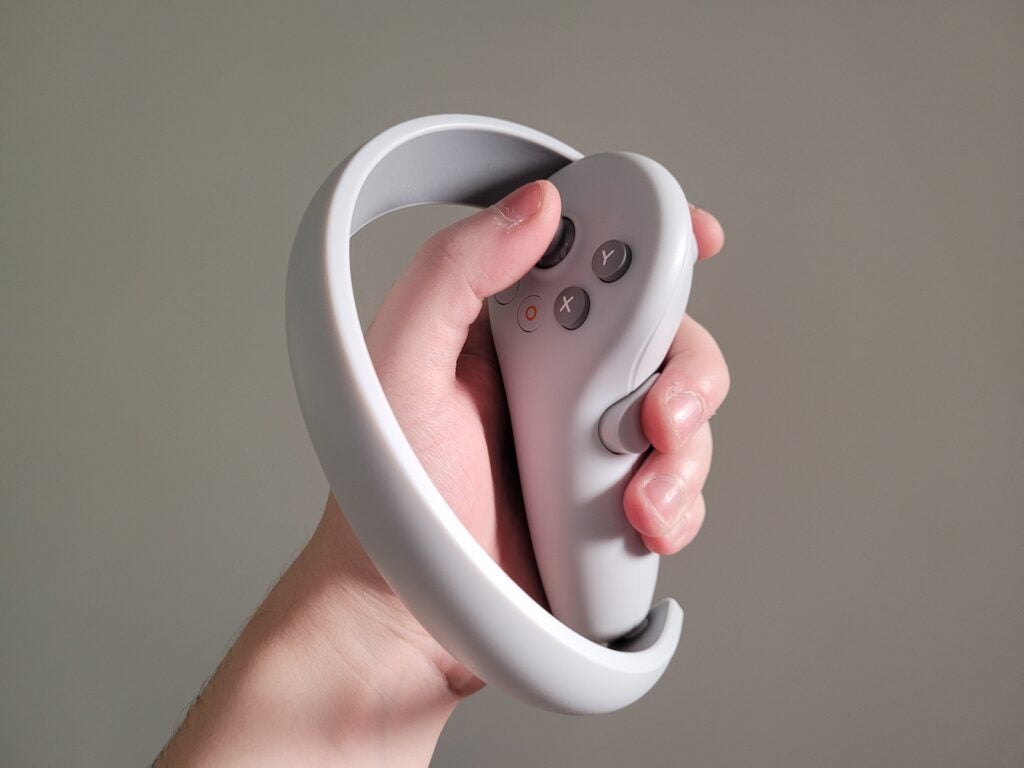
The Pico 4 even shares the same sins as the Quest 2, with the controllers requiring AA batteries for power. I’d personally prefer the pads to be rechargeable via USB-C, just like the headset, but the batteries provided never came close to running out of juice during the testing period.
The only major difference to the Meta Quest 2 is that the Pico 4 controllers are slightly longer, leaving more room to grip. But besides this, it’s difficult to separate the controllers of the two leading all-in-one headsets.
Specs and performance
- Powered by a Qualcomm XR2 processor
- Features an impressive 4K screen resolution
- Battery can last over 2 hours
The Pico 4 VR headset is powered by a Qualcomm XR2 chip, the exact same processor found inside the Meta Quest 2.
It’s impressive what both VR headsets are capable of achieving with this single chip and without a tether to a more powerful PC or console. I’ve explored many high-detail VR worlds with the Pico, with the likes of Superhot VR, Cities: VR and Ragnarock all impressing. I never noticed any slowdown or performance issues while using the headset.
But the Qualcomm XR2 chip does have its limitations. It’s not powerful enough to play demanding VR experiences such as Half-Life Alyx or Skyrim VR, so it’s no surprise to see such titles missing.
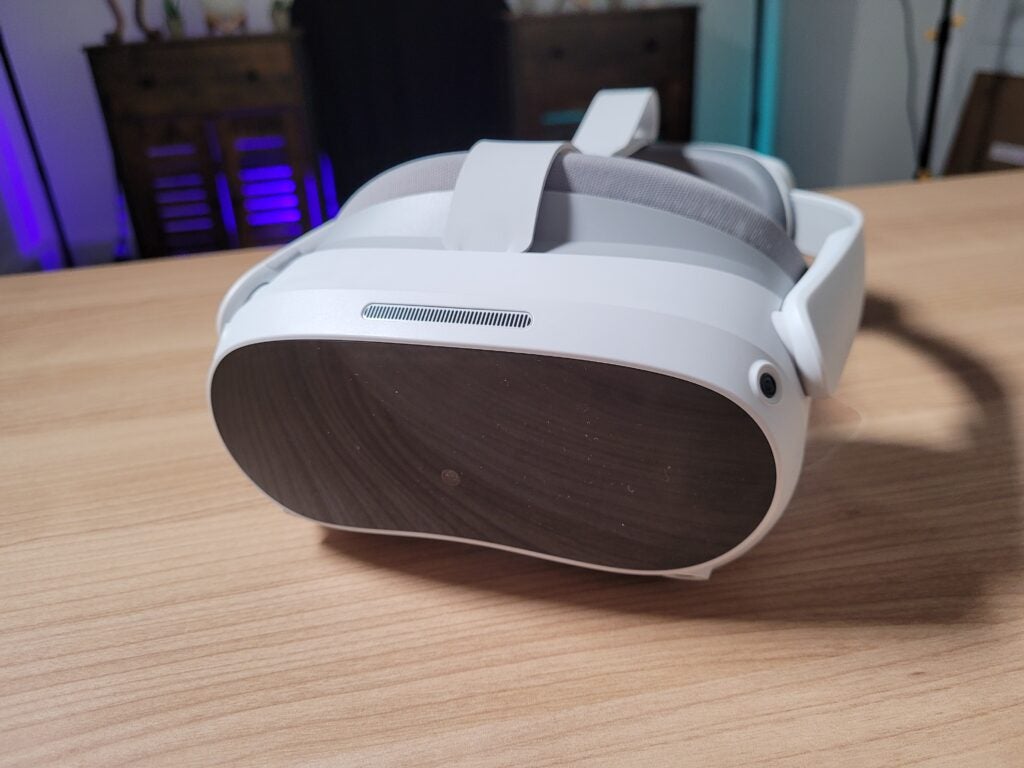
Fortunately, you are able to use the Streaming Assistant or VR Desktop to connect the headset to your gaming PC and gain access to a wider selection of high-end games. It’s not the most streamlined of experiences right now, but it’s still great to see the same functionality offered by the Quest.
But the biggest strength of the Pico 4 is undoubtedly its high-resolution LCD screen, which has a 2160 x 2160 resolution per eye – that’s even higher than the Quest 2’s 1832 x 1920 resolution per eye. The difference is noticeable too, with images appearing bolder and sharper. It’s more difficult to notice individual pixels, offering a similar visual clarity as the ultra-expensive Vive Pro 2.
The refresh rate is impressive too, with options available for both 72Hz and 90hz, ensuring buttery smooth motion which is important for reducing the risk of motion sickness.
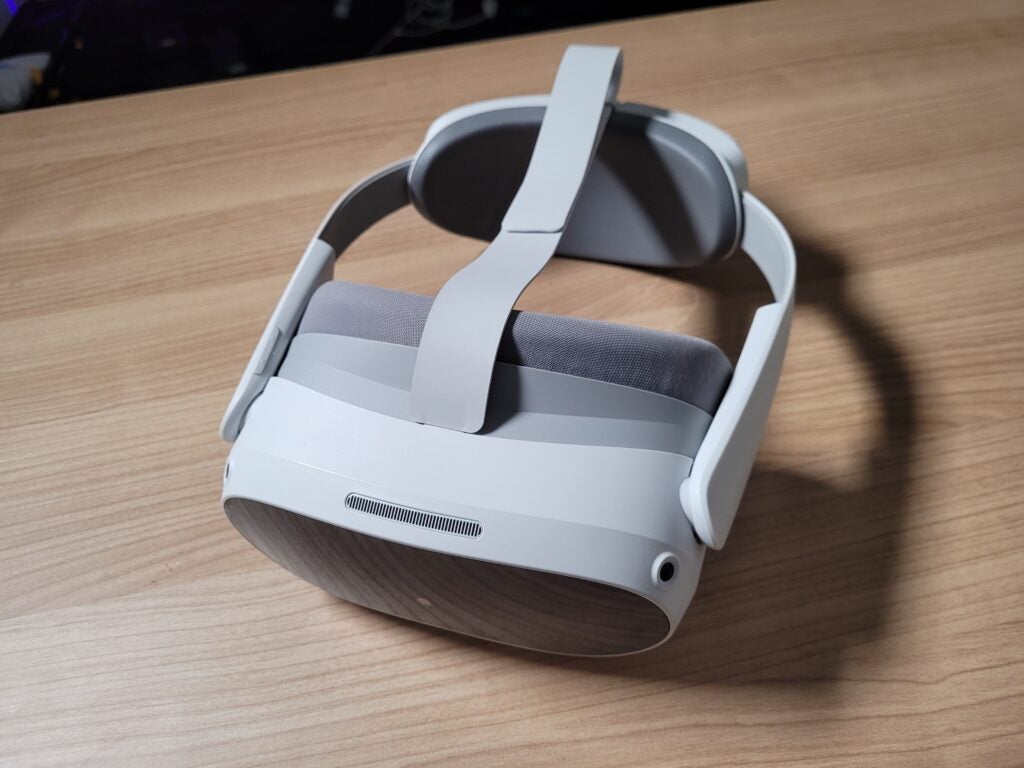
The battery is situated in the headset’s strap at the rear, helping to create a more even weight distribution so it isn’t dragging your forehead down. The rechargeable battery has an impressive 5300mAh capacity, which I found was able to last over 2 hours on a single charge.
When playing Walkabout Mini Golf, the headset fell from 100% to 55% in just one hour. I saw a similar result when playing the epic rhythm game Ragnarock, too. That may not sound like a lot of stamina on paper, but I personally wouldn’t want to stay immersed in VR for longer than 2 hours – it becomes a greater issue when passing the headset around a group of friends.
The Pico 4 is available to buy in either 128GB or 256GB storage variants, which should be enough for the majority of people considering VR games and experiences don’t take up a lot of space.
Games and features
- Lacks some VR big hitters from the Meta Quest
- Colour passthrough is a welcome feature
- No hand-tracking technology
I can’t fault the design and performance of the Pico 4 – it’s one of the best all-in-one VR headsets in those respects. But it’s, unfortunately, let down by a lacklustre game library.
Look on Pico’s online game store, and VR fans will see a lot of familiar titles. Superhot VR, Rec Room and Arizona Sunshine have all become VR classics, but have been around for over six years now. There are a couple of newer games that are a lot of fun, such as Ragnarock (not to be mistaken for God of War), Walkabout Mini Golf and Cities: VR, but there are a concerning number of major omissions.
That’s arguably not Pico’s fault, as Meta has wrapped up the exclusive rights to fantastic VR games such as Beat Saber and Resident Evil 4. But it’s disappointing to see no Among Us, Moss: Book II or Tetris Effect: Connected.

What’s more, Pico doesn’t have any major exclusive games to fight back against Meta. It’s difficult to justify a Pico 4 purchase over a Meta Quest for this reason alone.
This could all change in the future, as Pico 4 could snap up its own exclusive games. But it’s probably going to be very difficult to compete with the Quest given Meta’s financial muscle.
Pico has done a great job with the operating system though. It’s easy to set up the headset and configure your playing boundary, allowing for both stationary and room-scale use. There’s a simple, streamlined menu system. From here you can access your app/game library, shop around for more content or even dive into the settings to make your own custom tweaks.
The Pico has one advantage over the Meta Quest, and that’s colour passthrough. This enables you to see your surroundings with better detail without taking off the headset, which is incredibly useful when trying to locate the controllers.
There’s sadly no hand-tracking technology here though, so you’re reliant on the bundled controllers to navigate the operating system.
Latest deals
Should you buy it?
You want a lightweight all-in-one VR headset:
The Pico 4’s greatest strength is its compact and lightweight form, allowing you to immerse yourself in VR worlds without the distraction of cables and uncomfortable weight.
You want a game library to match the Meta Quest:
The Pico 4 has fantastic specs, but it’s missing a number of high-profile games that are available on the Quest, such as Beat Saber and Resident Evil.
Final Thoughts
The Pico 4 is the closest competitor to the Meta Quest I’ve seen yet, offering incredibly immersive VR experiences without the need for external devices such as a console or PC. It even has the Quest beat in certain areas, with a more lightweight design, higher screen resolution and slightly cheaper price.
However, the Pico 4 falls down where it really counts: the game library. It’s lacking some big hitters from the Meta library, including Beat Saber, Resident Evil 4, Among Us and plenty more.
How we test
When testing a VR headset, we make sure to try out a variety of games and app. We evaluate various aspects, such as the design, screen quality, battery life and the featureset.
We test a variety of VR games.
Use games and apps to evaluate performance.
We test the battery life.
FAQs
The Pico 4 has a lighter design and a higher screen resolution, but the Quest 2 boasts a greater selection of games.
Pico is owned by a Chinese company called ByteDance, which also owns the social platform TikTok.

